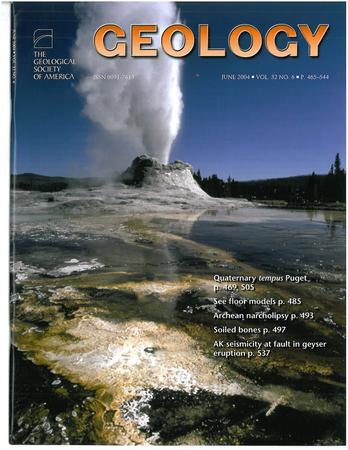赤铁矿双测年确定了美国明尼苏达州东北部太古宙带状铁地层元古代矿化和热史
IF 4.6
1区 地球科学
Q1 GEOLOGY
引用次数: 0
摘要
美国明尼苏达州苏必利尔湖地区Vermilion地区赤铁矿沉积的年代和成因已经争论了一个多世纪,并被推断为新太古代或中元古代。利用U-Pb和(U-Th)/He双测年方法,首次给出了苏丹铁矿赤铁矿矿床的直接测年,揭示了一个以前未知的古元古代成矿事件和记录近中元古代中大陆裂谷系侵位的热史。赤铁矿相的U-Pb结晶年龄在1.8 ~ 1.6 Ga之间,(U-Th)/He年龄在1.63 ~ 0.53 Ga之间,在约1.1 Ga处有明显的团簇。我们认为,替换型赤铁矿成矿发生在古元古代造山活动期间,包括Yavapai (1.71 ~ 1.68 Ga)和Mazatzal (1.65 ~ 1.60 Ga)增生造山活动和与Laurentia组合相关的岩浆活动,这些活动重新激活了剪切带,并促进了太古宙克拉通深部的热液蚀变。(U-Th)/He数据表明,赤铁矿经历了热叠印,但没有重置U-Pb系统,最一致的日期与约1.1 Ga的中大陆裂谷系统建立一致。赤铁矿的双测年证明了铁成矿与前寒武纪克拉通的热事件和构造事件的直接联系,并对共存的附属矿物无法提供的成因进行了限制。本文章由计算机程序翻译,如有差异,请以英文原文为准。
Hematite double-dating defines Proterozoic mineralization and thermal history of Archean banded iron formations in northeastern Minnesota, USA
The age and origin of hematite deposits in the Vermilion District of Minnesota (USA), Lake Superior region, has been debated for over a century and inferred to be Neoarchean or Mesoproterozoic. Using a new geochronological approach combining U-Pb and (U-Th)/He double-dating of hematite, we present the first direct dates for hematite deposits at the Soudan iron mine, revealing a previously unknown Paleoproterozoic mineralization event and a thermal history recording the emplacement of the proximal Mesoproterozoic Midcontinent Rift System. Hematite phases yield U-Pb crystallization dates ranging between 1.8 Ga and 1.6 Ga and (U-Th)/He dates in the range of 1.63−0.53 Ga, with a distinct cluster at ca. 1.1 Ga. We propose that replacement-style hematite mineralization was generated during Paleoproterozoic orogenic events, including the Yavapai (1.71−1.68 Ga) and/or Mazatzal (1.65−1.60 Ga) accretionary orogenies and associated magmatism related to the assembly of Laurentia that reactivated shear zones and facilitated hydrothermal alteration deep into the Archean craton. (U-Th)/He data suggest that hematite ore experienced a thermal overprint that did not reset the U-Pb system, with the most consistent dates coinciding with the establishment of the Midcontinent Rift System at ca. 1.1 Ga. Double-dating of hematite is demonstrated to directly link iron mineralization to thermal and tectonic events in Precambrian cratons and to place constraints on genesis not available from coexisting accessory minerals.
求助全文
通过发布文献求助,成功后即可免费获取论文全文。
去求助
来源期刊

Geology
地学-地质学
CiteScore
10.00
自引率
3.40%
发文量
228
审稿时长
6.2 months
期刊介绍:
Published since 1973, Geology features rapid publication of about 23 refereed short (four-page) papers each month. Articles cover all earth-science disciplines and include new investigations and provocative topics. Professional geologists and university-level students in the earth sciences use this widely read journal to keep up with scientific research trends. The online forum section facilitates author-reader dialog. Includes color and occasional large-format illustrations on oversized loose inserts.
 求助内容:
求助内容: 应助结果提醒方式:
应助结果提醒方式:


